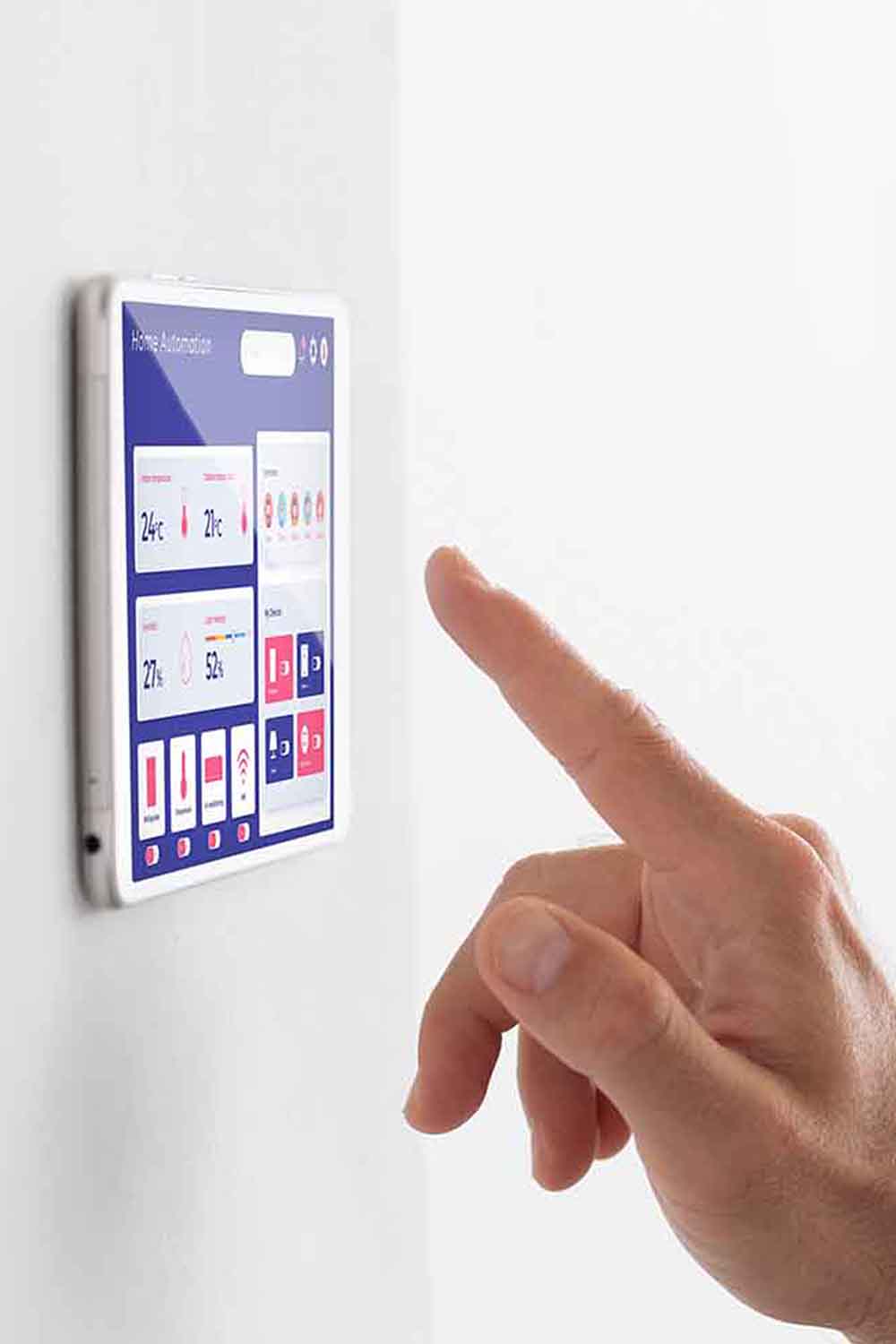Finneytown Thermostat
Quality Thermostats in Finneytown, OH
You wouldn’t expect thermostats to be considered something that helps with indoor air quality. Nevertheless, we offer smart thermostats that track air quality and pollen levels in the region and turn on the purification systems when levels are high. Our thermostats can ventilate your home and air out the house. They can be helpful if you are cleaning, painting or doing activities that create a high level of pollutants.
Finneytown Heating & Cooling offers a whole line of Smart Thermostats, programmable thermostats and wifi thermostats that are state-of-the-art. Modern thermostats display a wide range of options with user-friendly control features for homeowners looking to optimize both comfort and air quality. All of this will help you save more money and completely optimize comfort in your Cincinnati Ohio area home. We offer these at low price rates. At Finneytown Heating & Cooling, our selection of high quality thermostats are extremely tech-savvy and easy to install. They’re smart home friendly and designed to help you lower your energy costs and monitor and control your home’s ventilation, relative humidity and air purity. If you’re interested in having us install a smart thermostat in your home in the Greater Cincinnati or Dayton area, call us today.
What is Indoor Air Quality?
A home’s air quality is something crucial that all-too-often gets neglected or overlooked in a lot of modern dwellings. While many people believe air pollution is primarily an outdoor phenomenon, studies indicate this is actually false. It turns out the air inside a lot of modern dwellings and workplaces is far more polluted than the air outside, even in bigger cities and metropolitan areas. Because the average American spends more than 21 hours a day inside on average, this whole area of residential air quality deserves serious attention. Because the air indoors often lacks proper filtration, indoor air quality is something customers need to be taking seriously.
The EPA defines Indoor Air Quality as the quality of air inside a building or home and how it relates to the people inside the building or home. Typically, a homeowner’s Indoor Air Quality has a very real and sometimes profoundly negative effect on the occupants health in addition to everyone’s overall well-being, mood and energy levels.
Why is Our Indoor Air Quality So Important?
Because the majority of Ohioans spend the majority of their time inside, residential air quality has far more of an impact on them than most people realize. If the quality of air in a residence is poor or the quality is insufficient, it tends to have negative impacts on everyone’s health in addition to it being bad for the home itself. Experts say air quality levels in a lot of modern homes can be anywhere from 2 to 5 times as polluted or toxic as the air outside, where Mother Nature has a wide range of ways it cleans and purifies the air, recycling it. When you realize how tightly insulated almost all modern homes and buildings are built, it’s clear why professionals urge homeowners to consider certain indoor air quality products and air-filtration solutions to be used in conjunction with their HVAC equipment.
Because buildings are sealed airtight, any indoor pollution gets trapped inside and recirculated in the absence of proper filtration and ventilation. Then, on top of that, there can also be issues with humidity, mold and mildew. More often than not, the use of an air filtration device or a dehumidifier or humidifier or air purifier goes a long way to improve air quality when used in conjunction with a heating or cooling system. Additionally, UV Lights and other air filtration products can benefit a homeowner in a host of ways. If air quality is poor, short-term health implications can arise after a single exposure, or multiple times being exposed. Those short-term symptoms can irritate the nose, the eyes, the throat, and the skin. Or, it can cause fatigue, dizziness and headaches.
Top 4 Benefits of Owning a Smart Thermostat
In most dwellings, heating and cooling takes up almost half of the overall energy consumption. Because it costs so much, the makers of most modern smart home devices and products have developed smart thermostats that provide a customer with superior temperature control and automation over a home’s temperature, air quality and overall climate — control that could save you a lot of money on energy costs during the summertime and during the wintertime. It’s actually through a smart thermostat’s Wi-Fi connection that enables you to do a lot more than mere temperature automation. There’s a long list of benefits for using one of these affordable and smart home products in your home.
#1
Monitor your home
Your smart thermostat is like a window into your home. You can always look at the companion app while you’re away from your home to see if the heat’s running (and what the temperature is). If you own a second home, smart thermostats are great for confirming the place is running smoothly while you’re away as well.
#2
Limiting human error
#3
Save on energy costs
#4
Receive emailed alerts and updates
What temperature should I set on my thermostat?
Figuring out exactly what temperature a homeowner should set their thermostat can be challenging to do if you’re on a budget, trying to save money and you live with multiple people under one roof. To help you find a comfortable balance between comfort and energy savings, we present the following:
When it’s cold outside: Sometimes it takes a little trial and error finding that sweet spot temperature in a home, regardless of whether you are more interested in comfort or savings. A general rule of thumb for energy-saving heating is to set it at 68° F. For more comfort, you might raise it 1 or 2 degrees at a time. Remember to dress warm indoors for savings. And if you can take it lower, turn the temperature down 1 or 2 degrees at a time.
When it’s hot outside: Nothing beats the relief of a cool, humidity-controlled home during those especially hot days of summer here in Ohio. To pinpoint your happy zone, try setting your A/C at 78° F for a good mix of comfort and energy efficiency. From there you can adjust it as needed.
To save money: According to the Department of Energy, a homeowner can save up to 10 percent every year on cooling and heating just by setting the thermostat back 7 to 10 degrees from the normal level for a mere eight hours a day. With this in mind, at nighttime when you’re sleeping and/or during the day while you’re away, save yourself some hard earned money and make the necessary adjustments.
Tips to Promote Healthy Indoor Air Quality
Consider an Air Purifier
Air purification is a major strategy to improve indoor air quality. Not only does an air purifier improve your air quality, but it also helps your HVAC system capture free floating dirt, dust, dander, pollen, and other allergens in your home. This helps your HVAC system make air filters last longer and reduce the stress from poor airflow. They can also kill bacteria, mold and viruses and remove strange odors from the air as well as chemical emissions.
Keep Up On Cleaning
Keeping your equipment clean is essential. However, in addition to keeping rugs and carpets clean to improve air quality, including regular cleaning and vacuuming into your regular routine will go a long way in helping keep your home’s air quality optimal. Doing so prevents this stuff from building up.
If you know what an air filter does, this one should be an obvious way to keep your air quality healthy. Replacing furnace filters and ac filters on a regular basis is essential for not only indoor air quality, but also to get the most out of your HVAC equipment. Furnace filters need to be checked nearly every month during the winter. A/C filters should be checked during the summer as well. However, keep in mind, if you upgrade to a HEPA filter or media air cleaner, it will out the air and improve air quality.
Be Consistent With Seasonal Maintenance
Maintenance isn’t just good for your HVAC equipment. It also lowers energy costs and optimizes indoor air quality. Staying current and being consistent with maintenance on your home comfort systems is essential for comfort and air quality. In fact, being proactive with all HVAC equipment enables it to run smoothly and do its job the way it was designed to do it. Being proactive always pays off in the long run.





